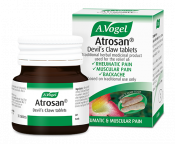Our bodies and pain
It’s amazing how frequently we humans fail to connect what we do physically with the physical symptoms we then experience.
- A violin player will wonder why their neck hurts on one side.
- A fisherman will be annoyed by his stiff arm without thinking that it’s his casting arm.
- Michelangelo probably puzzled over the mysterious discomfort in his neck and shoulder after a long bout of painting the ceiling of the Sistine Chapel…
If your neck hurts then it is extremely likely that there’s a practical cause – something you have done or are doing that is affecting your neck. It needn’t be a dramatic incident such as falling off your motorbike or crashing down a ski slope, but is more likely to be an insidious, on-going habit that is gradually turning your neck into a mass of trip wires for pain.
The neck bone's connected to the...
Actually, it’s more a case of the muscles in the neck being connected to the muscles in the shoulders and skull. Tension in the neck or shoulders, or pressure on the neck muscles, may then be felt down into the arms and hands, and over the scalp as far as the eye sockets.
Pins and needles down the arms and into the wrists and hands, or headaches that start in the base of the skull are just some of the knock-on effects of neglecting your neck.
I make no apology for the fact that if you ask me why your neck hurts I am very likely to tell you to check with your doctor. A scan to check for injured discs, calcified spurs, and the like, is not something that you can afford to miss if you want to identify the right treatment.
Couch surfing on the computer
Slumping over your laptop, hunching over your tablet, or peering tensely at your computer screen at work are all likely culprits in the neck pain line-up. We look down on our work (and play), whether it’s paper-based or electronic – it is rarely suspended in mid- air for us to look straight ahead at. Holding our phone or ipad up high whilst we tweet or text would be as uncomfortable and damaging as cranking our neck down to the gadget on our lap – the strain on the shoulders would soon tell.
If you spend a lot of time at a desk or socialising on a screen, check your neck position. Having the screen at eye level for work is very helpful and can avoid those long hours of hunched-shoulder, projecting-chin postures that spell neck pain.
Driving your neck to distraction
How upright are you in your driving position? Do you slump in the driver’s seat, shoulders around your ears whilst you tense every muscle in a desperate attempt to beat all the maniacs around you to that last parking space? Are you pinned into place for hours at a time, hurling yourself from one end of the country to the other, whilst the clock ticks with deadly intent to prove you late? There’s nothing like a daily car-based commute to help you get it in the neck.
Car seats are quite manoeuvrable these days. Spend some time playing around with a combination of height and tilt that keeps you straight as a (comfortable) rod, with support for your lower back and no need to bring your chin down towards your chest. Keeping your head held high may feel strange to start with, but it’s far less likely to damage your neck. Keeping your shoulders down will release the pressure on the muscles there, and the positive ramifications will be felt as far as your fingers, not to mention your lower spine.
If back pain is your problem when driving, have a look at my blog post on back pain while driving.
Stand and deliver a pain-free neck
As there is less incentive to slope around with your chin on your chest when on your feet, it would seem that a job or hobbies that keep you active would free you from neck problems. The sad fact is that we often still slouch! Standing tall and proud is not so common these days. Check yourself right now. Are your shoulders back and your ears level with them (on a line from the floor to the sky)? If not, you are probably putting strain on your neck and upper back.
Your spine naturally curves gently, with the result that what happens at the top of the spine impacts the bottom, and vice versa. To avoid problems, the aim when standing is to maintain these natural curves in the spine. Ideally, you should be able to draw an imaginary vertical line down the side of your head, shoulders, hips and heels. Your abdomen holds much of the responsibility for supporting this position so it should be tucked in and strong. Keep your feet approximately your hip’s width apart, and balance your weight evenly between both feet.
This way you get to build your abs whilst avoiding neck pain – win and win!
Sleeping with the enemy – neck pain at night
The way you spend the night can impact on the next day – and not just in obvious ways! The wrong pillow, the contorted posture, and you’ll feel it for sure in the morning.
Never sleep on your front, as the neck angle needed to turn the head to breathe is too extreme. Sleeping on your back or your side is far better but the most comfortable position of these will be dictated by the nature of your neck issue, your own anatomy and your personal experience.
Bearing in mind you’re going to fidget and turn during the night, maintaining the correct position for your neck isn’t entirely under your control but you can at least start the night well.
Pillows that claim to offer support to the back or neck are called orthopaedic pillows, should you wish to do your own research. You may see orthopaedic pillows for the neck under ‘cervical’ pillows, as the neck is the ‘cervical’ part of the spine. These pillows tend to have a deeper indent where your head would rest and a bulge under the neck to support the spine.
What’s pretty much said by all the experts, though, is just to use one, firm pillow. Overly soft pillows allow the head to sag and overly hard fillings, or multiple pillows, bend it too far the other way. So take a look at an orthopaedic pillow but make sure you’ve tried adjusting the current number of ‘normal’ pillows you use right now before spending lots of money.
Further information, including mattress choice can be found in my blog: Reasons for neck pain after sleeping & helpful tips.
Make it better
Here are some exercises that we promise will take just 10 minutes to perform that should help strengthen the deconditioned and strained muscles of the neck:
- Standing, drop your head to one side while continuing to look ahead. Hold for 10 seconds and swap sides. Repeat twice more each side. To increase the stretch, drop the opposite shoulder.
- Standing again, lower your chin to your chest, hold for 10 and then look up to the ceiling and hold for 10. Repeat twice more. A more advanced version of this would be to lie on your front on the end of the bed with just your head over the end. Slowly nod it up and down to strengthen those same mack muscles further.
- Next, standing straight again, look over your right shoulder and hold firm for 10 seconds, then your left shoulder for 10. Repeat this 3 times. You’ll notice more of a pulling or pinching sensation on one side more than the other, which shows you’ve targeted the muscle knot responsible.
- Lying on your back and staring straight up, put your tongue into the roof of your mouth and tuck your chin towards your chest for a count of 10. Then lift your head from the floor; trying to imagine the bend is at the base of the skull, between the ears. Hold this for 10 and relax. Try to do this slowly for two minutes.
- Finally, while sitting straight, jut your head forward and hold for 10, then all the way back and hold for 10. Repeat another 5 times and that’s your 10 minutes done.
Remedies to help
Rolling the shoulders and self-massage using the fingertips are good things to incorporate every couple of hours if you’re working at a desk or driving a long journey. However, combining them with some Atrogel on the painful area should provide even greater relief. Atrogel is made from fresh Arnica and is licensed for the relief of muscle pain.
When you are home, use a hot shower to warm the neck muscles. Use a ‘massage’ setting if your shower head has one and apply a warm wheat bag or a hot water bottle (wrapped in a cover) afterwards. Once thoroughly warm, repeat the stretches outlined above and go to bed with a dose of Dormeasan if necessary. Licensed for sleep disturbances, both the Valerian and Hops in Dormeasan have also long been used for muscle tension and to ease pain. Better sleep and relaxed muscles, combined with some resolve to self-massage and stretch should gradually banish your neck pain for good.





 Looking for a treatment to relieve pain in conditions such as muscle aches or pains, stiffness, rheumatic pain or after sporting injuries?
Looking for a treatment to relieve pain in conditions such as muscle aches or pains, stiffness, rheumatic pain or after sporting injuries?

